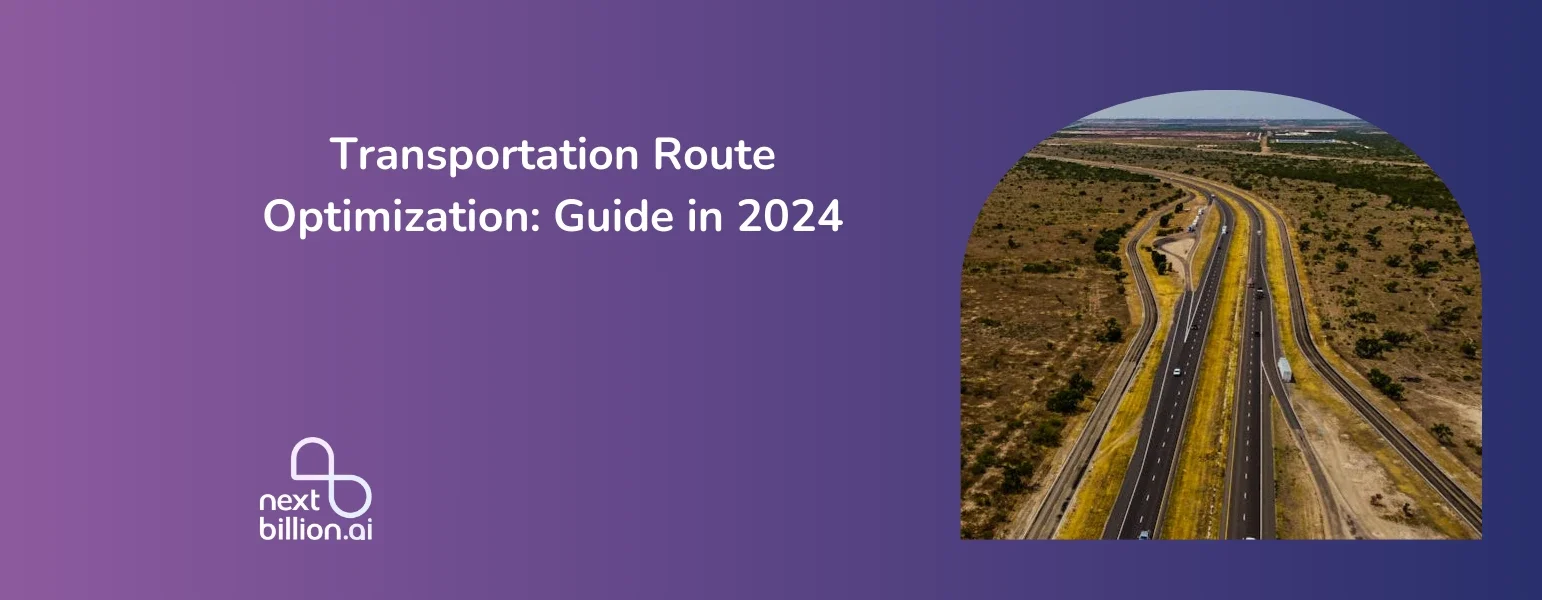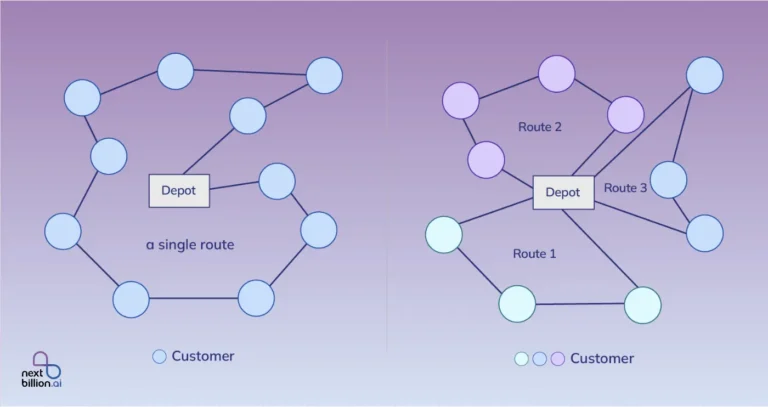
Table of Contents
Transportation Route Optimization has become a crucial component as organizations navigate the complexities of modern logistics.
In this guide, I have explored the latest trends, tools, and strategies in transportation route optimization, offering insights that can lead to cost savings, reduced environmental impact, and enhanced operational performance.
What is Transportation Route Optimization?
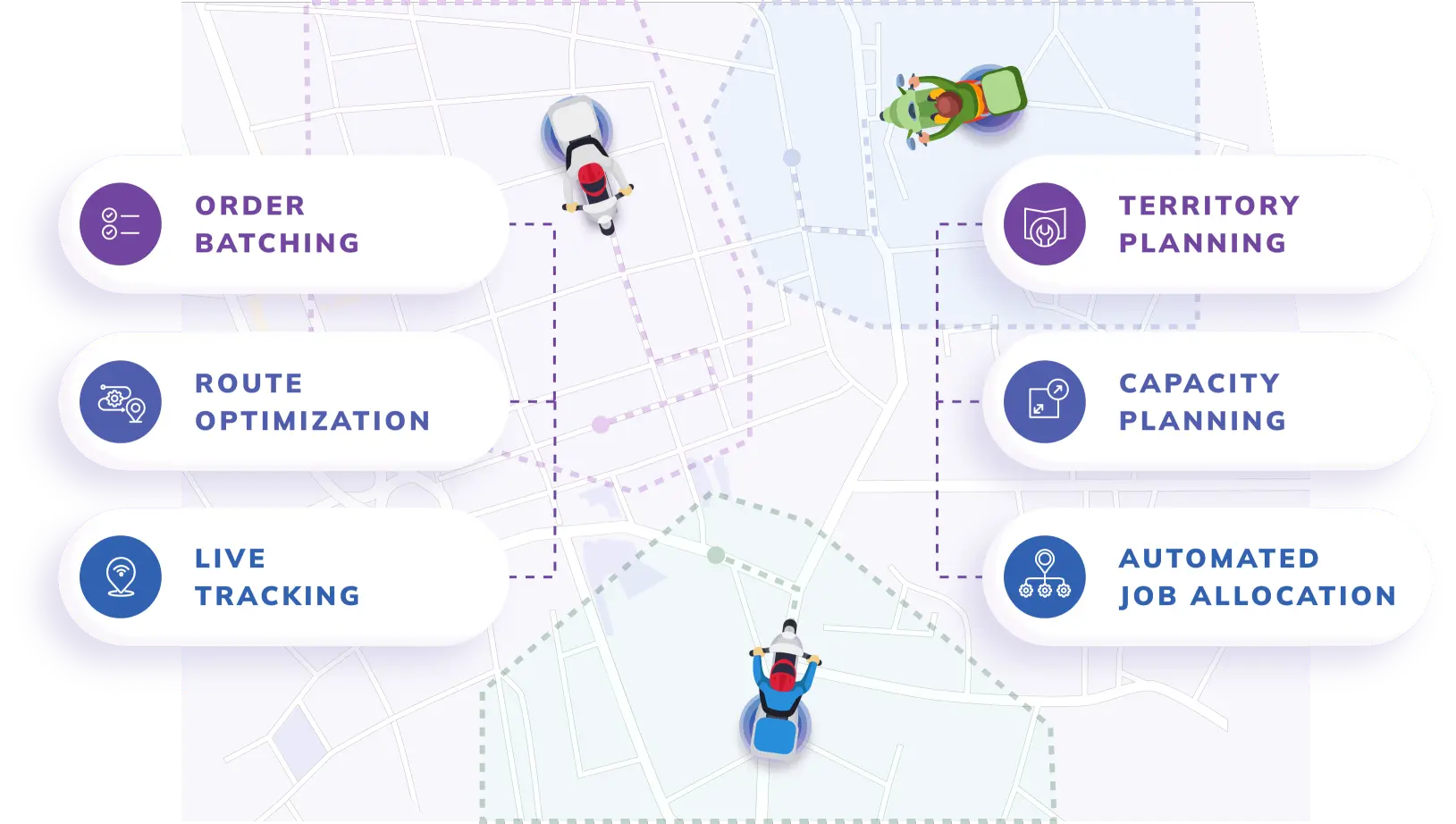
Transportation route optimization is the process of finding the most efficient paths for vehicles to travel while delivering goods or transporting passengers.
This involves leveraging advanced algorithms and real-time data to determine the best routes, taking into consideration factors such as traffic conditions, delivery windows, fuel costs, and vehicle capacities.
The goal is to minimize travel time and expenses while maximizing operational efficiency and customer satisfaction.
Why is Transportation Route Optimization Important?
Transportation route optimization is crucial for several reasons:
- Cost Reduction: By identifying the most efficient routes, companies can significantly reduce fuel consumption and vehicle maintenance costs, directly impacting their bottom line.
- Environmental Impact: Optimized routes lead to fewer emissions, contributing to environmental sustainability and helping companies meet regulatory requirements.
- Customer Satisfaction: Timely deliveries and reliable transportation services enhance customer satisfaction and loyalty.
- Resource Utilization: Efficient routing ensures optimal use of vehicles and human resources, preventing underutilization or overextension.
- Competitive Advantage: Companies that implement effective route optimization strategies can outperform competitors by delivering faster and at lower costs.
How does Transportation Route Optimization work?
Transportation route optimization works through a combination of advanced technologies and strategic planning:
Data Collection: Gathering real-time data from various sources, including GPS systems, traffic reports, weather forecasts, and delivery schedules.
Algorithm Application: Using sophisticated algorithms such as Dijkstra’s algorithm, the Vehicle Routing Problem (VRP) solvers, or machine learning models to process the data and identify the optimal routes.
Simulation and Modeling: Running simulations to predict and analyze different routing scenarios, ensuring the chosen routes are efficient under various conditions.
Integration with Fleet Management Systems: Integrating optimization software with existing fleet management systems for seamless operation and real-time updates.
Continuous Monitoring and Adjustment: Continuously monitoring route performance and making adjustments as needed based on changing conditions, such as new traffic patterns or unexpected delays.
How to do Transportation Route Optimization?
The process of implementing transportation route optimization is systematic and combines data analysis, technology, and operational modifications. The following is a guide to assist you in implementing transportation route optimization in your company:
1. Establish Requirements and Objectives: Clearly state the objectives you want to achieve with optimization. Understanding your goals will influence the entire implementation process, whether they are cost reduction, faster delivery, or less environmental impact. Determine any particular needs, including applicable regulations, delivery window restrictions, and vehicle limits.
NextBillion.ai offers custom objective parameters to tailor the input request per the use case. Refer to Route Optimization API documentation to learn more about these parameters.
2. Information Gathering and Analysis: To begin, gather useful data such as past routes, delivery timetables, vehicle capacities, environmental factors, and traffic patterns. Apply advanced statistical tools to find current errors and pinpoint development areas.
3. Incorporate Geospatial Technologies: Using Geographic Information System (GIS) software to visualize and analyze spatial data. Road networks, possible obstacles, and geographic relationships can all be mapped out with the support of this technology. Real-time tracking and dynamic route modifications are provided by integration with GPS data.
NextBillion.ai’s Road Editor API offers advanced capabilities to set up restrictions such as turn restrictions, speed limits, road closures, parking restrictions, and more. Enterprises can use this API along with the proprietary RRT Web App to manage road network planning dynamically.
4. Real-time Data Integration: Use APIs and other integration techniques to include real-time data into your optimizing system. Connect with external sources to get real-time updates on traffic, road conditions, and other changing factors. This confirms that the system is flexible enough to adjust to changes as they occur.
5. Integration of Fleet Management Systems: Link your optimization algorithms to a reliable fleet management system. This makes vehicle coordination, real-time tracking, and centrally controlled monitoring possible. The system must offer information about fuel usage, driving patterns, and maintenance requirements to support continuous optimization efforts.
NextBillion.ai offers seamless integration capabilities to integrate with major fleet management software like Salesforce, SAP, Netradyne, Samsara, Verizon Connect and many more.
6. Frequent Updates and Audits: To guarantee maintained efficiency, perform regular checks of the route optimization system. To stay competitive, keep up with industry best practices and technological advancements; update your system accordingly.
The Re-optimization parameter in NextBillion.ai’s Route Optimization API enables users to re-optimize new tasks or unassigned tasks.
What are the use cases of Transportation Route Optimization?
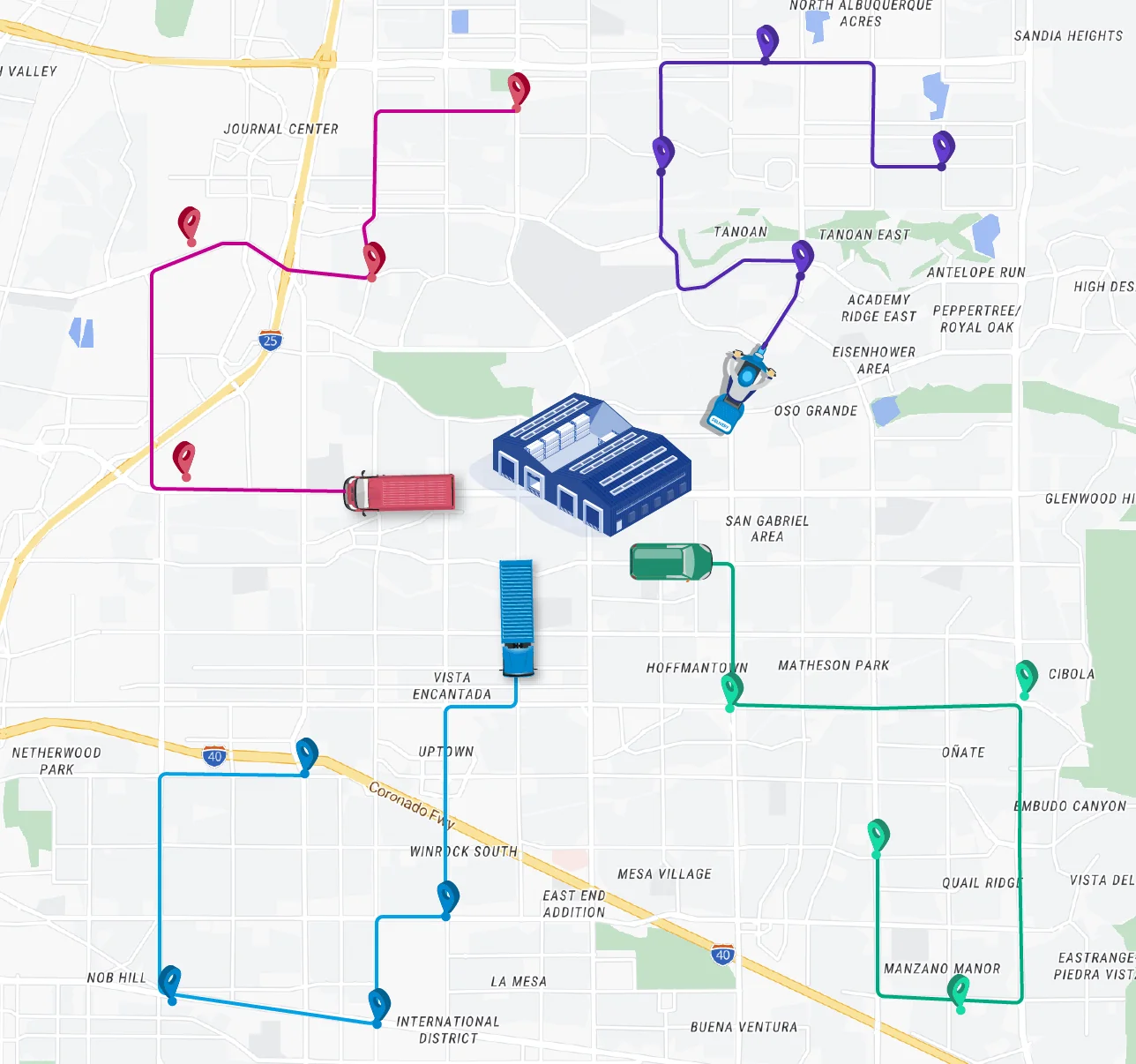
1. Last-Mile Delivery
Last-mile delivery refers to the final step of the delivery process, where goods are transported from a distribution center to the end customer. This is often the most complex and expensive part of the delivery chain.
Route optimization in this context ensures that deliveries are made efficiently by minimizing travel time and distance. For instance, e-commerce giants like Amazon use route optimization to schedule deliveries, reducing fuel costs and ensuring timely deliveries. The optimization considers factors such as traffic conditions, customer availability, and delivery time windows to maximize delivery efficiency and customer satisfaction.
2. Public Transportation Systems
Public transportation agencies use route optimization to enhance the efficiency and reliability of buses, trains, and other transit services. By analyzing passenger demand, traffic patterns, and transit schedules, these agencies can design routes that minimize travel time and wait times for passengers.
This leads to improved service frequency, reduced operational costs, and higher passenger satisfaction. For example, urban transit systems in cities like New York and London use advanced route optimization techniques to manage schedules and routes dynamically, ensuring efficient use of resources and better service delivery.
3. Freight and Logistics Management
In the freight and logistics industry, companies manage the transportation of goods across long distances, often involving multiple modes of transportation.
Route optimization helps these companies plan the most efficient routes for their fleets, considering factors such as delivery deadlines, fuel consumption, and load capacities. This ensures that goods are delivered on time while minimizing costs.
Companies like DHL and FedEx utilize route optimization to streamline their logistics operations, reduce fuel consumption, and improve delivery reliability. The optimization process includes planning routes that avoid congestion, reduce idle times, and utilize the most efficient transport modes.
By applying route optimization in these scenarios, organizations can achieve significant operational efficiencies, cost savings, and improved service quality.
Case Study: NextBillion.ai and a Leading TMS Provider
Challenge: A prominent Europe-based TMS provider faced high API costs and struggled with handling complex routing constraints, such as the number of stops, load capacities, and accurate ETAs, due to limitations in managing large matrix sizes.
Solution: The provider switched to NextBillion.ai’s Route Optimization API and Distance Matrix API. This integration offered:
- Efficient route-planning capabilities, optimizing the sequence of stops considering various factors like start time, distance, and vehicle type.
- Large matrix capacity (up to 5000 x 5000) for accurate travel and arrival time predictions.
- Real-time traffic data for dynamic updates to arrival and departure times.
- Budget monitoring tools for better financial planning and resource management.
Outcome: The TMS provider saw a 30% improvement in ETA and ETD accuracy, a 40% reduction in API costs, and an enhanced ability to manage complex routing constraints, leading to improved customer satisfaction and scalability to meet growing demands.
Transportation route optimization is pivotal in various sectors, from last-mile delivery to public transit and freight logistics, driving efficiency, cost savings, and customer satisfaction.
What are the Benefits of Transportation Route Optimization?
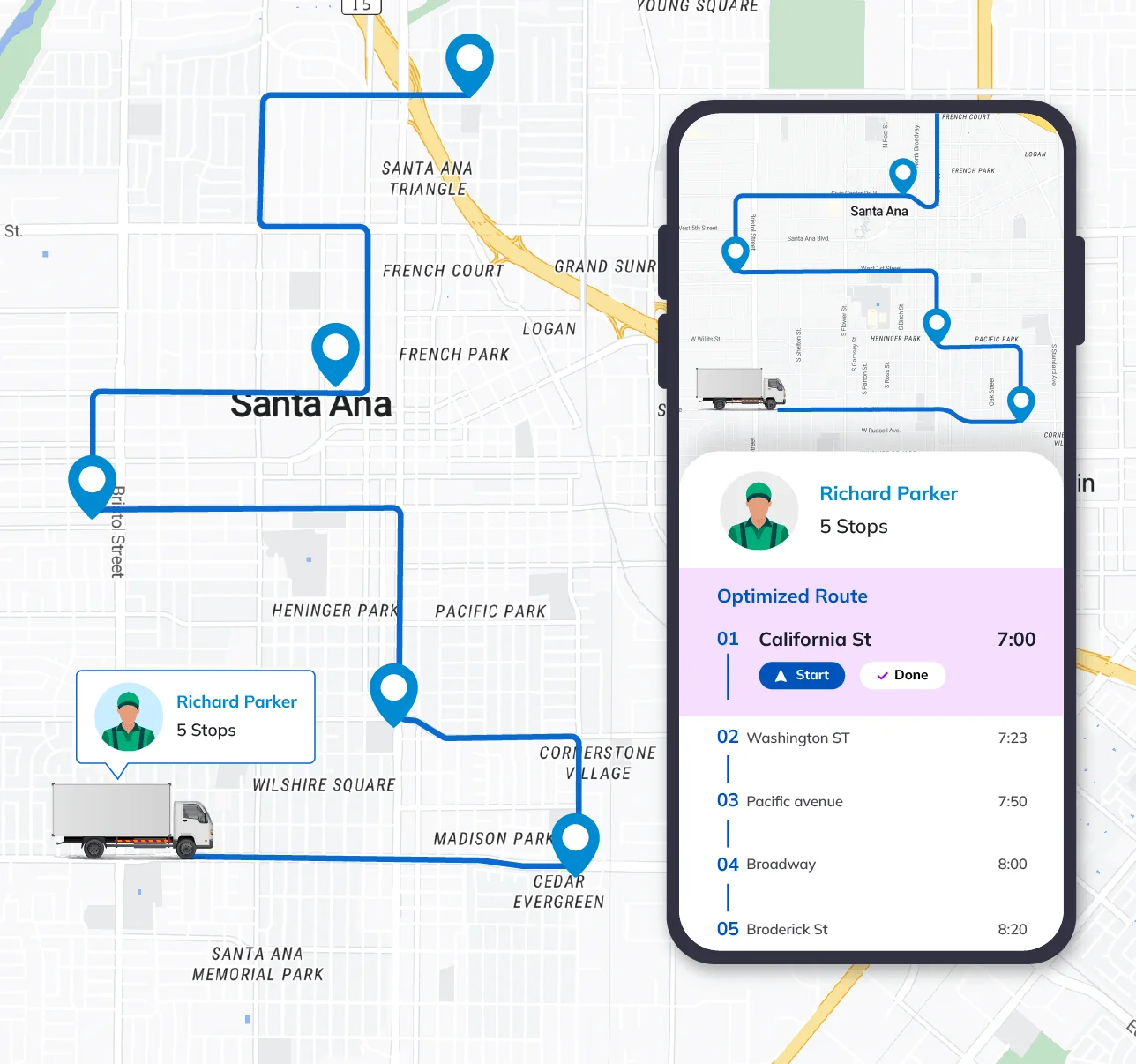
1. Cost Reduction
One of the primary benefits of transportation route optimization is the significant reduction in operational costs. By identifying the most efficient routes, companies can minimize fuel consumption, reduce vehicle maintenance expenses, and lower labor costs associated with longer travel times.
2. Enhanced Efficiency and Productivity
Optimizing routes allows for better use of resources, ensuring that vehicles and drivers are utilized to their fullest potential. This leads to increased productivity, as more deliveries or transport tasks can be completed within the same timeframe. Efficient routing also reduces idle time and the distance traveled, allowing businesses to achieve more with their existing assets.
3. Environmental Sustainability
Optimized routes contribute to environmental sustainability by reducing fuel consumption and associated emissions. By minimizing the distance traveled and avoiding congested routes, companies can lower their carbon footprint and comply with environmental regulations.
4. Scalability and Flexibility
As businesses grow, the complexity of managing transportation routes increases. Route optimization solutions provide the scalability needed to handle larger volumes of data and more intricate routing constraints. This flexibility ensures that companies can adapt to changing demands, such as increased customer orders or expanded service areas, without compromising efficiency.
Getting Started with Transportation Route Optimization
To experience the transformative benefits of transportation route optimization, the first step is to see it in action. Sign up for a demo with NextBillion.ai to explore how our Route Optimization API can revolutionize your transportation operations.
During the demo, you’ll get a comprehensive overview of the features, functionalities, and real-time capabilities of their solutions, tailored to address your specific challenges and requirements.
About Author
Shivangi Singh
Shivangi is a seasoned Technical Writer with a passion for simplifying technical concepts. With over 5 years of experience, she specializes in crafting clear and concise documentation for various technical products and platforms.





